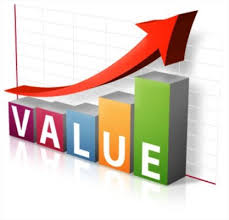Your Buy-Sell Agreement: In good shape? Needs a tune up? Or Disaster waiting to happen?
An Ounce of Prevention is Worth a Pound of Cure
I can’t tell you how many times I’ve heard from business owners and their spouses that a key person became disabled or died and left an operating closely-held business in turmoil. What, no Buy-Sell Agreement? Ask anyone who has been selling and appraising business for a number of years and they will tell you this sort of thing is common. All businesses with more than one shareholder should have a Buy-Sell Agreement (“BSA”) in place. Even when companies have BSAs, they are poorly written, causing divisive and expensive issues down the road.
All multi-owner businesses need a well-written BSA to transfer shares in a fair and efficient manner when a shareholder dies, becomes incapacitated, is involved in a marital dissolution, quits or is fired, retires, or the company enters bankruptcy (aka,”Trigger Events”).
Exit Strategies’ accredited appraisers perform numerous business valuations each year, and because this work requires us to review corporate documents, we can say with some authority that many privately-held companies have problematic Buy-Sell Agreements from business, funding and valuation perspectives. When we come across B-S Agreements (pun intended), most often the owners didn’t want to invest the money to do it properly, or they just didn’t understand how import it was to have a viable BSA in place at the outset. Unfortunately, those who experience costly litigation, internal disputes, business erosion and family problems learn a painful lesson later on.
Shareholders have three choices when deciding on how shares will be priced when one of the aforementioned trigger events occurs:
- Fixed Price: Shareholders agree on a set price. Unfortunately, the price is likely years out of date and the shareholders usually have not agreed on a way to update the price.
- Price Formula: Shareholders agree on a formula to calculate future pricing. Chances are, no one has calculated it lately and because of changes in the company, economic and industry conditions over time, the formula price may be higher or lower than fair market value at the time of the trigger event. Also, it’s often seen where the shareholders haven’t agreed on ways to make necessary/appropriate adjustments to the formula.
- Valuation Process: Shareholders agree on a process employing one or more appraisers to determine the value of shares using guidelines specified in the BSA. There are two types of process BSAa: Multiple Appraiser and Single Appraiser. Multiple appraiser agreements call for the selection of two or more appraisers to develop one, two, or three appraisals whose conclusions form the basis for the final price. If that process sounds time consuming, cumbersome and expensive, IT IS!! It can also be divisive. Single appraiser agreements call for the selection of one appraiser whose valuation sets the final price. The choices are to a) select the appraiser and value upon a trigger event; b) select the single appraiser now and value at the trigger event; or c) select the single appraiser now, value now, and of course value again when a trigger event occurs.
Our Recommendation is to SELECT ONE APPRAISER NOW and VALUE NOW
- Select Now – If the shareholders creating the buy-sell agreement name the appraiser at the time of the agreement, all parties have a voice and can sign off on the selection. Early on, when everyone’s interests are aligned, this is a relatively easy decision to make. Doing it after a trigger event, when interests have diverged, is very difficult.
- Value Now – Once selected, the chosen appraiser provides a baseline valuation, which is a fantastic way to put all shareholders on the same (price) page. We often provide a draft report, and give everyone time to provide comments for consideration before the report is finalized.
Why selecting a single appraiser now and appraising now is the best choice for closely-held companies when creating a Buy-Sell Agreement:
- The selected appraiser is viewed as independent by everyone
- Because the appraiser must interpret the BSA language related to valuation when conducting the initial appraisal, any issues regarding lack of clarity or inconsistency with the owners’ intentions can be resolved up front
- The valuation process is observed by all shareholders at the outset, so they all know what will happen when a trigger event occurs (no surprises)
- The concluded value establishes a baseline price (no surprises)
- The selected appraiser maintains independence with respect to process and renders future valuations consistent with the BSA terms and prior reports
- Subsequent appraisals, either annually or at trigger events, should be less time consuming and less expensive
- Parties will likely gain confidence in the process
- Parties will always know the current value for the Buy-Sell agreement, which is helpful for personal or estate planning purposes
- The initial valuation gives the shareholders a roadmap to increasing value if that is their objective.
- The appraiser’s knowledge of the company and industry grows over time, enhancing confidence for all parties
- Creates a means of maintaining pricing for other transactions, thereby enhancing “the market” for a company’s shares
Valuation is a key piece of any shareholder buy-sell agreement. If you need help with the business valuation provisions of your buy-sell agreement, or need a valuation for a trigger event, feel free to Email Bob Altieri or call him at 916-905-5706.

 The need for business valuation arises in many circumstances ranging from dispute resolution, to estate planning, to the sale of a business to name only a few. As in all professional disciplines, it is important to hire a practitioner who is fully trained, able to discern relevant facts, and abreast of current best practices. Consider the following New York Supreme Court case.*
The need for business valuation arises in many circumstances ranging from dispute resolution, to estate planning, to the sale of a business to name only a few. As in all professional disciplines, it is important to hire a practitioner who is fully trained, able to discern relevant facts, and abreast of current best practices. Consider the following New York Supreme Court case.* I recently completed an exit planning valuation of a business that enjoyed a very favorable discount on purchases of a key component used in the assembly of its products. The discount, negotiated many years ago, was a handshake deal between the founder of the company and his former employer who manufactured the component. This large discount enables the business to be significantly more profitable that it would be otherwise. Any investor or buyer for this business will naturally be concerned about whether the company can continue buying this component at the same below-market price.
I recently completed an exit planning valuation of a business that enjoyed a very favorable discount on purchases of a key component used in the assembly of its products. The discount, negotiated many years ago, was a handshake deal between the founder of the company and his former employer who manufactured the component. This large discount enables the business to be significantly more profitable that it would be otherwise. Any investor or buyer for this business will naturally be concerned about whether the company can continue buying this component at the same below-market price.

